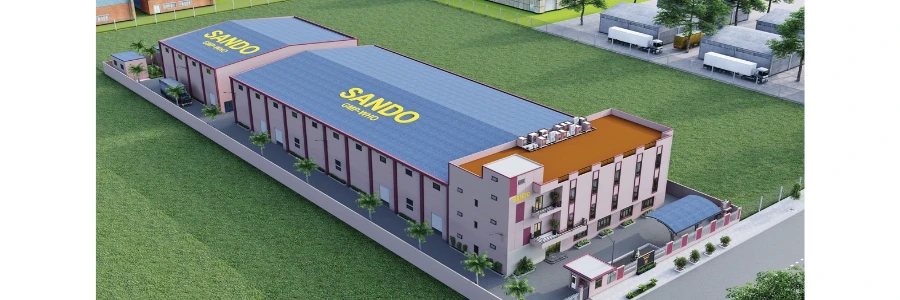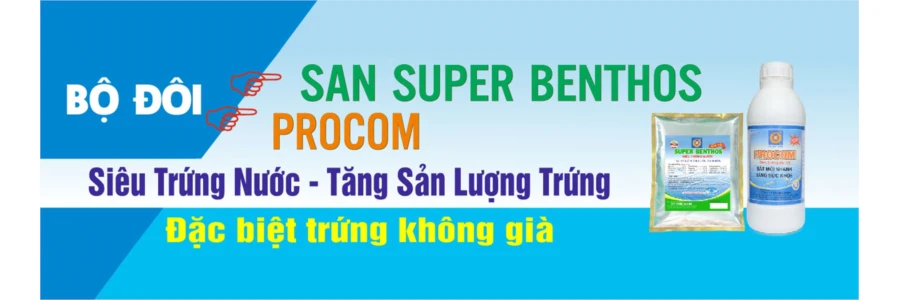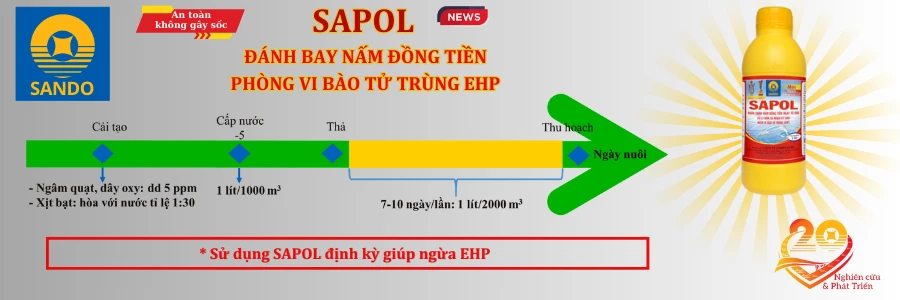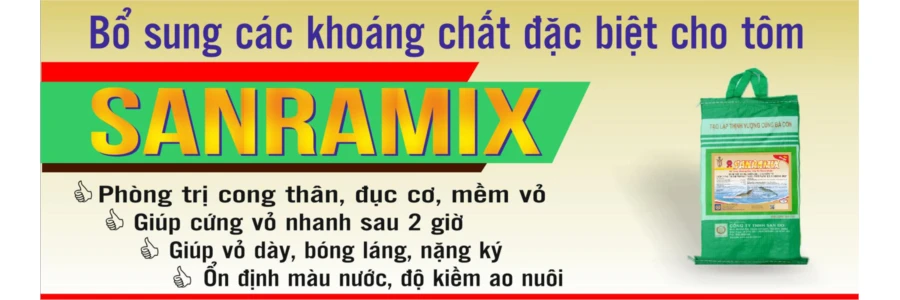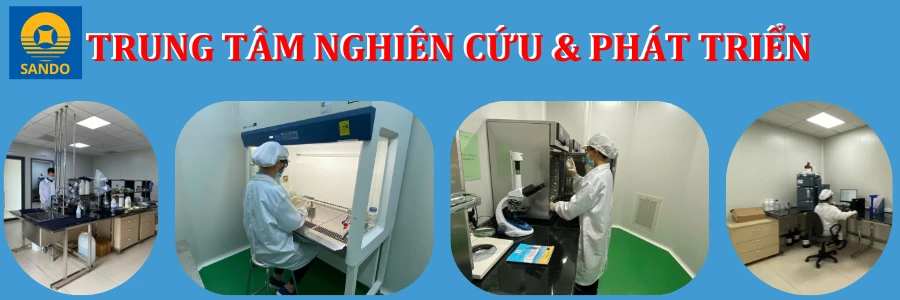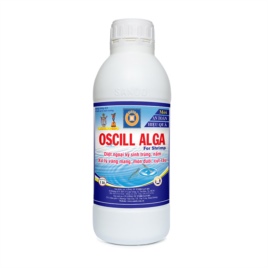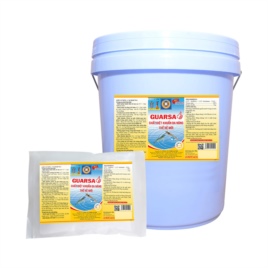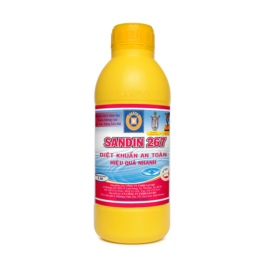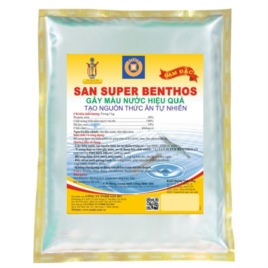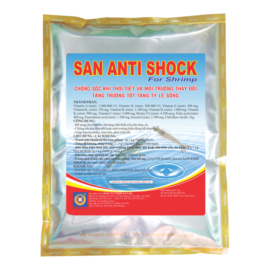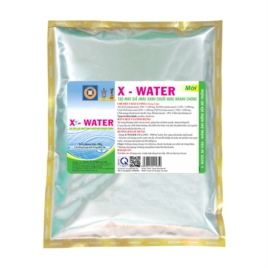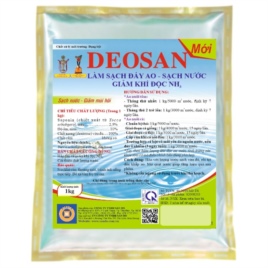Application of biotechnology in shrimp farming
The application of biotechnology in commercial shrimp farming is now considered an essential supportive solution to a stable and sustainable shrimp farming industry.
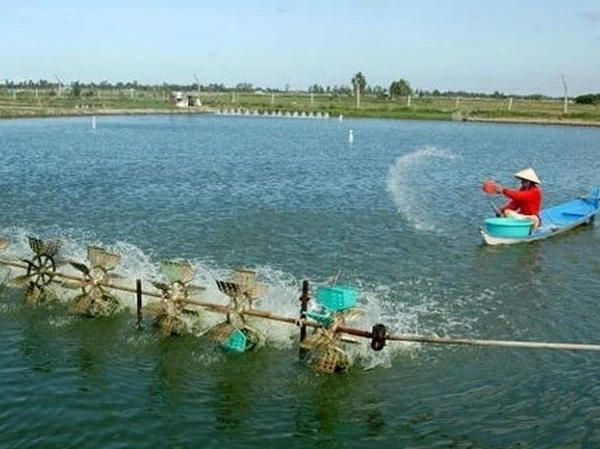
Shrimp pond in Vietnam
The abuse of antibiotic chemicals in intensive shrimp farming currently is destroying the ecological balance and harmfully affecting the environment. It is also a reason for poor product quality. The existence of banned chemicals and antibiotics in shrimp product creates barriers to Vietnam's shrimp exports to the world market. Therefore, shrimp farming needs to apply biotechnology without using antibiotics or chemicals in all stages of the farming process.
Effects of biological probiotic product on environment and farmed shrimp
Probiotics will stimulate the development of in water environment. Beneficial microorganisms will compete against harmful microorganisms for living environment. It helps to reduce harmful microorganisms, stabilize pond environment, transform organic substances such as: excess food, dead algae, sediment, etc. into inorganic substances that are not toxic to farmed shrimp. At the same time, it will transfer toxic substances for instance NH3, NO2, etc. into nontoxic substances such as NO3, NH4+. In that way, it helps to stabilize water quality and substrate at the bottom of farming pond.
Biological products in shrimp intestinal tract support in stimulating beneficial bacteria to grow and compete against harmful bacteria to gradually reduce the number of bacteria causing intestinal diseases for shrimps. Biological products also participate in metabolic process to create vitamins, metabolize nutrients from food for shrimp, and secrete some antibiotics, enzymes or chemicals to inhibit and destroy pathogens, improving health and resistance to disease for shrimp. In view of that, the type of microbiological product that is commonly used as it is easy to apply for shrimp by farmers and brings high efficiency for them is a product called EM. This is a product that includes 87 selected anaerobic and aerobic microorganisms from 2,000 common microorganisms in food technology and fermentation technology. Some of them are photosynthetic bacteria, lactic bacteria, yeast, and fungal filaments. The advantages of EM on farmed shrimp are increase in shrimp’s resistance, ability of shrimp to resist unfavorable external conditions, increase digestion and absorption of feed of farmed shrimp, growth in the quantity and quality of shrimp production, extermination harmful microorganisms, and limitation of environmental pollution.
Principles of using probiotic product
Dr. Nguyen Tan Sy, Deputy Director of the Institute of Aquaculture (Can Tho University), said that microbial products cannot be used simultaneously with antibiotics and chemical disinfectants. Besides, the usage of those products must be in the right dosage and usage direction. For powdered microbiological preparations, it is recommended to use pond water to dissolve and aerate from 2 to 4 hours before using to increase microbial biomass. For microbiological preparations in water-based form, it is should be incubated an aerobically to increase microbial biomass. The best time for this process before using is from 8.00 am to 10.00 am. The usage of microbial products periodically to maintain the appropriate bacterial density to control biological environment of water and pond bottom, stabilize all environmental factors of farming ponds, prevent harmful bacteria, toxic algae and potential pathogens that might appear in farming ponds.
Dr. Sy recommends that shrimp farmers should use microbial products at the beginning of the crop to bring high efficiency. The application of microbial products can be divided into 3 stages which are before stocking, during farming process, after harvesting. The first stage is before stocking. It is suggested that farmer need to drain all water in farming pond, clear all mud and sediment at pond’s bottom. After that, farmer needs to use microbial inoculants to treat black sludge and dry pond’s bottom from 10 to 15 days. Later, farmer needs to plough the pond bottom to release toxic gases such as NH3, H2S from the pond bottom, creating favorable conditions for microbiology of decomposition to develop strongly. Afterwards, farmers need to do liming to improve pond’s bottom and banks, using microbial products in accordance with the manufacturer's instructions, checking microorganisms in the pond whether recommended requirements are met before stocking. The second stage is during the culture process. Farmers need to use microorganisms to treat water environment periodically during the whole crop to stabilize the density of beneficial bacteria to maintain water quality throughout the crop and prevent disease. Besides, farmer also need to mix microorganisms in food to feed shrimps to stabilize microorganisms in shrimp intestines, helping shrimps enhance feeding and absorb feed better, improving feed efficiency to control intestinal diseases on shrimps. The third stage is after harvesting or post-harvest phase. It is recommended to use microbial inoculants to treat wastewater before releasing into the environment and use it to treat waste at the end of the crop.
Thereby, Dr. Sy instructed shrimp farmers how to prevent and treat some shrimp diseases with biological products. For example, if shrimp goes to water surface for breathing due to toxic gas under water, farmers need to dissolve 2-3 liters of original EM into 20 liters of water taken from the pond and then evenly throw into the pond right at the time shrimp floats on water surface, while opening fan for ponds at full capacity. If shrimp has worn tail and beard, farmer need to use 2-3 liters of EM garlic together with 10kg of feed, mix well and keep food anaerobic for 4 hours, and then feed shrimp the mixture at the rate of 1kg for every 100,000 shrimp daily. In a different way, farmer can use 50 liters of EM2 / 1,000m2 / day, used consecutively 3 times for every 2 days. If shrimp pond with algae, use 4 liters of EM5 / 1,000m2 for 5 consecutive days in the morning. Subsequently, when algae die and leave the farming pond with low pH, use lime to raise pH level of pond. If there is white spot disease in shrimp, use 5 liters of EM5 / 1,000m2 for 5 consecutive days in the morning until shrimp shedding a lot. At that time, farmer needs stop using EM5 and use 10 liters of EM2 / 1,000m2 / 2 days instead and continue until white spot disease gradually decreases.
Source: tongcucthuysan.org.vn
In aquaculture in general and shrimp farming in particular, algae is an important link in the natural food chain and serves as an extremely important biological filtration system to balance different environmental factors in pond...
